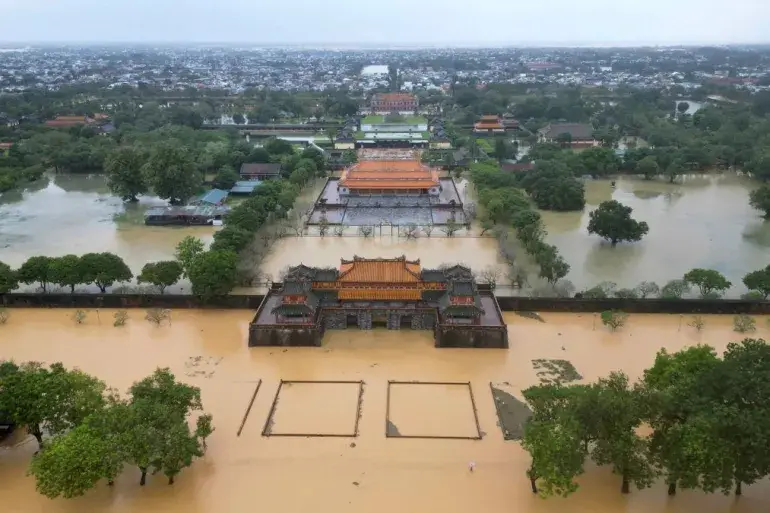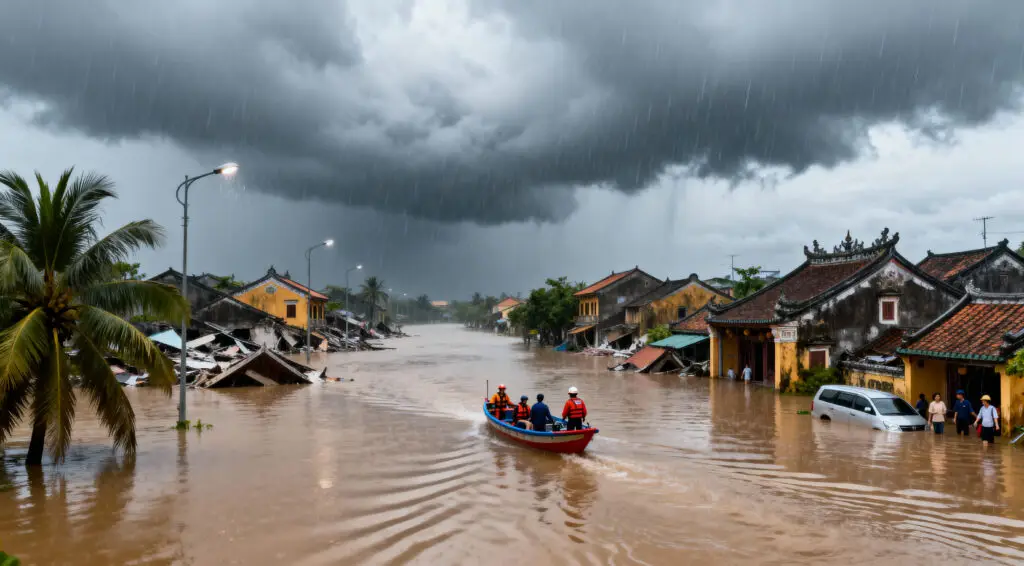Unprecedented Rainfall Causes Widespread Flooding in Central Vietnam
Central Vietnam is getting more rain than it has in decades, which has caused devastating floods that have killed at least nine people. Five additional people are missing after the accident, and heavy rains are still causing damage to villages along the coast and in the interior.
Da Nang, Hoi An, and Hue are three important tourist spots that have been hit the worst. These towns are currently dealing with huge damage to their infrastructure and ecology. As things get worse in a number of provinces, officials have called for an emergency reaction.

Source: Al Jazeera
Da Nang and Hoi An Suffer Severe Casualties and Property Damage
Six people were reported dead in Da Nang and Hoi An, two of Vietnam’s most attractive beach cities. In both areas, thousands of houses have been flooded and streets have turned into deadly rivers.
According to officials, more than 103,000 dwellings have been damaged by floods, and many of them are entirely underwater. Rescue personnel are still working in really bad conditions to find those who are missing in communities that are underwater.
Historic Heritage Sites Face Unprecedented Flooding and Destruction
Flooding has caused a lot of damage to UNESCO World Heritage sites in Hue and Hoi An, putting centuries-old buildings at risk. Cultural landmarks that used to be full of tourists are now half underwater, and their preservation is in danger right away.
Authorities and volunteers are striving to protect historical relics and stop any damage to weak buildings. Experts said that depending on the weather, rehabilitation might take months or even years.
Recommended Article: Category 5 Hurricane Melissa Poses Major Threat to Jamaica
Torrential Rains Reach Record Levels in Just 24 Hours
Meteorologists measured more than 1,000 millimeters of rain in 24 hours, which is one of the biggest amounts ever recorded in Vietnam. Floodwaters are rising as heavy rain falls on the area for the third day in a row.
Some neighborhoods in Hoi An are still quite badly affected, with just roofs visible in some sections. High flood levels have cut off whole communities, forcing people to leave in large numbers and making humanitarian aid operations critical.
Reservoirs and Rivers Overflow, Increasing Risk of Secondary Disasters
Many reservoirs in Da Nang and the regions around it are full, which might cause them to flood again. People are also worried about secondary floods and the collapse of infrastructure since the river levels are rising.
Landslides have already cut off important roads, leaving some mountain settlements cut off from the rest of the world. Since October 28, authorities have stopped train travel between Hanoi and Ho Chi Minh City because the tracks are unstable.
Emergency Services Mobilize to Protect Residents and Restore Access
Rescue personnel, the military, and local volunteers are all working nonstop to help people and get access back to regions that were damaged. As the floodwaters continue to rise, emergency shelters have been set up to house people who have lost their homes.
The government is sending food, water, and medical supplies to areas that have been blocked off by landslides. Power shortages and problems with communication have made it even harder to plan large-scale rescue efforts.
Weather Bureau Warns of Continued Heavy Rainfall and High Risk
Vietnam’s Meteorological Department has warned that there will be severe rain over the next two days. Between October 29 and 30, certain places may get more than 400 millimeters of rain, which will make the issue worse.
Officials are telling those who live in areas that are likely to flood to stay aware and be ready for more evacuations. The risk of more landslides and flash floods is still quite high since the earth is wet and the rivers are overflowing.























